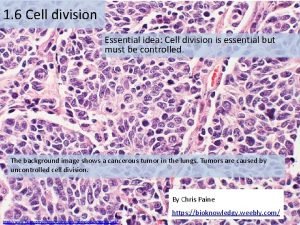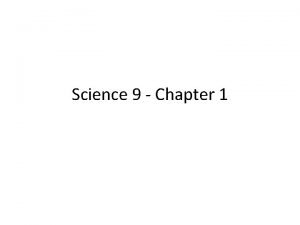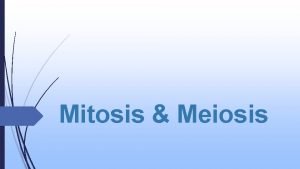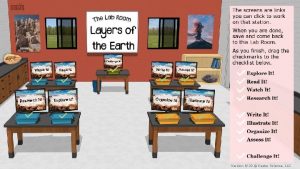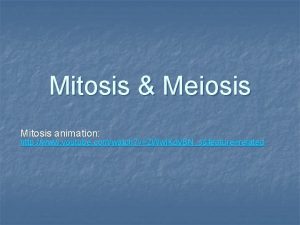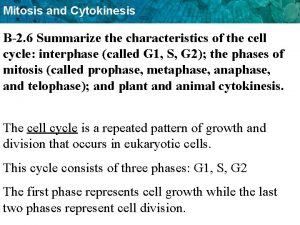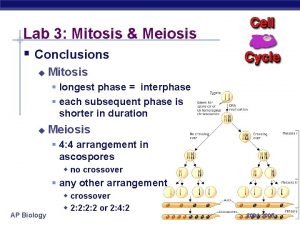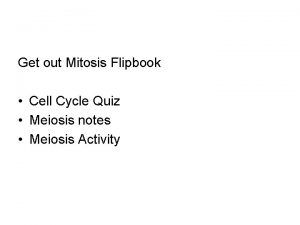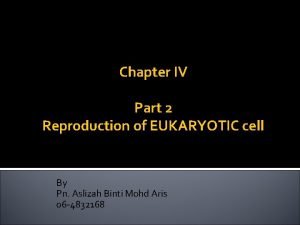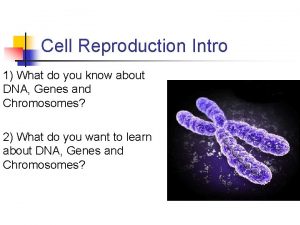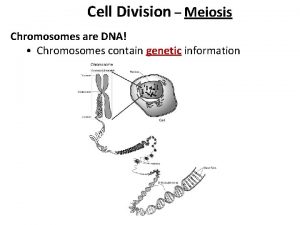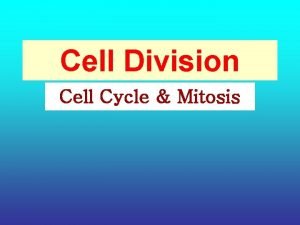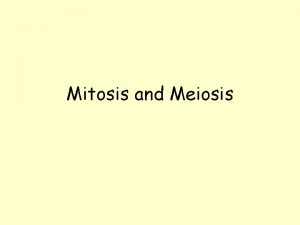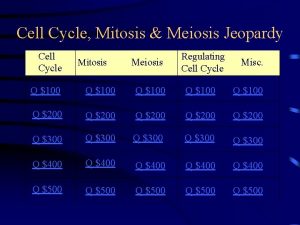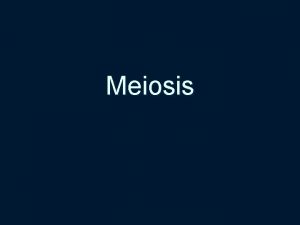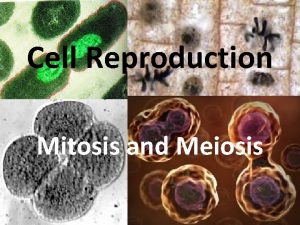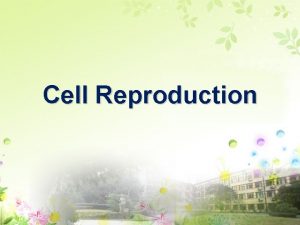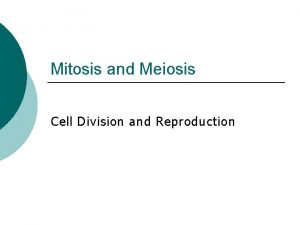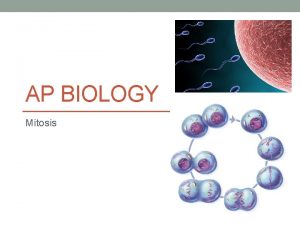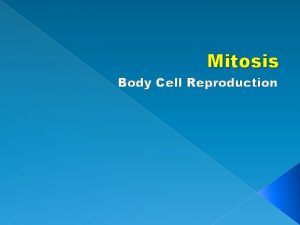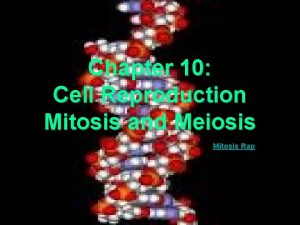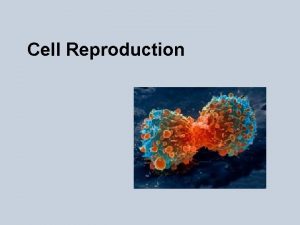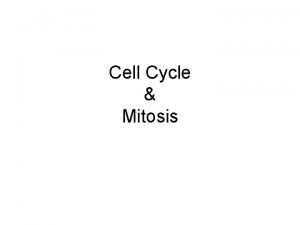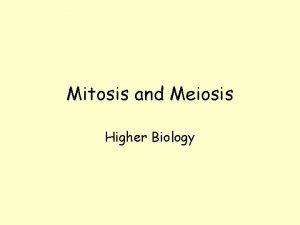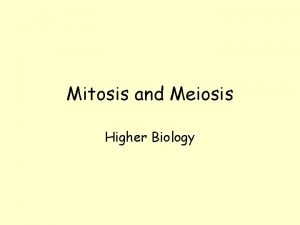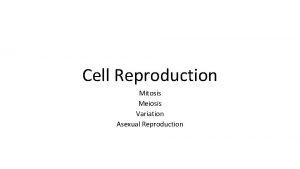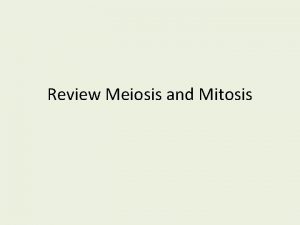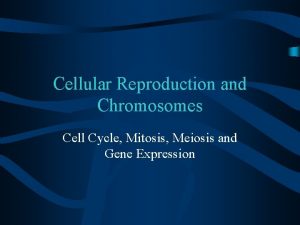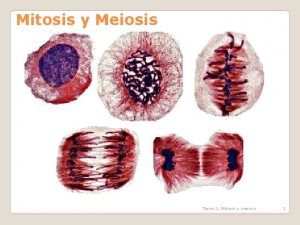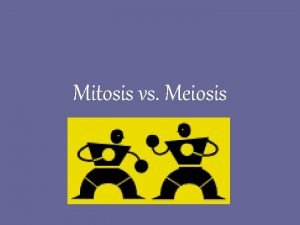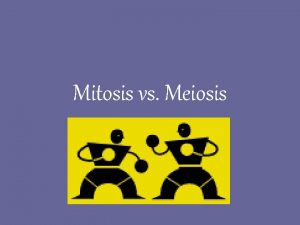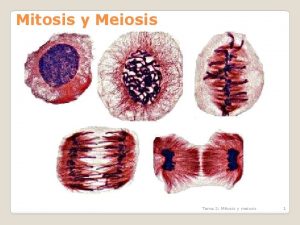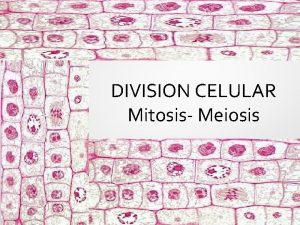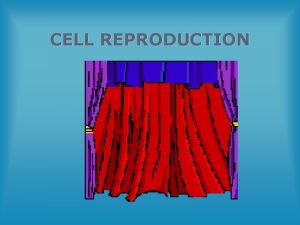The Cell Cycle Mitosis and Meiosis Cell Reproduction


























- Slides: 26

The Cell Cycle, Mitosis and Meiosis Cell Reproduction

The Cell Cycle Most of a cell’s time not spent dividing G 1: Gap 1 or Growth 1: cell is growing after just being created S stands for Synthesis. DNA is copied before the cell can divide again G 2 is a second growth stage as the cell prepares to divide again

Mitosis is used to…. n n Mitosis is used for asexual reproduction. To spread out in a habitat by making clones. It is also used to grow and develop and repair injuries

This is a clone of Aspen Trees. They are all genetically identical

There are 4 Steps to Mitosis, and Interphase when cells are in the G, S and G 2 parts of the cell cycle

During the S part of the Cell cycle, the DNA Replicates This creates two identical pieces of DNA called sister chromatids Together the two sisters Make up a chromosome

Prophase (First phase) Occurs as the chromosomes become visible and the nuclear membrane begins to break down.

During Metaphase (middle phase) The Chromosomes Line up in the middle of The cell. Having been Pushed and pulled on By the spindle fibers Spindle Fibers

Each sister chromatid attaches to different spindle fibers at the Kinetochores of the chromatids

During Anaphase (Separate) The spindle fibers shorten, pulling the sister chromatids apart to opposite ends of the cell. Once apart they are now each called Chromosomes.

Telophase (End phase) Two nuclei reform, and a new cell wall called a cell plate is built in plants to separate the cytoplasm of the two new daughter cells.

The two daughter cells are identical to each other and to the parent cell which created them

Mitosis works fine for Growth and development Repair of damaged tissue But it can’t be used to make egg or sperm cells because… Egg and sperm cells (gametes) need one half the chromosomes of the parent cell

Meiosis Sexual Reproduction in Plants Meiosis makes cells with 1/2 of the chromosomes as the parent cell. In plants this process makes either male microspores that become sperm, or female megaspores that become eggs This process also makes unique cells

In plants a diploid (two sets of Chromosomes) generation Does meiosis to make a haploid (half the number of Chromosomes) generation.

Homologous Chromosomes Pairs of chromosomes that control the same traits


n During Meiosis the cell goes through two divisions In the first one, the homologous cells separate, and in the second the sister chromatids separate n Creating up to 4 cells with half the number of chromosomes as the parent cell. n

How does Meiosis create unique cells? n During Prophase 1 crossing over happens to the homologous pairs to create new combinations of DNA

Homologous pair One from mom, one from dad Crossing Over Unique cells due to crossing over






 Mitosis/meiosis concept map answers
Mitosis/meiosis concept map answers Mitosis and meiosis
Mitosis and meiosis Cell division mitosis and meiosis
Cell division mitosis and meiosis Essential idea
Essential idea Parthenogenesis asexual reproduction
Parthenogenesis asexual reproduction Mitosis and meiosis differences
Mitosis and meiosis differences Asexualk
Asexualk Sexual reproduction and genetics section 1 meiosis
Sexual reproduction and genetics section 1 meiosis Sexual reproduction and genetics section 1 meiosis
Sexual reproduction and genetics section 1 meiosis Steps of cell cycle
Steps of cell cycle Write difference between mitosis and meiosis
Write difference between mitosis and meiosis Kesler science the lab room answer key
Kesler science the lab room answer key Haploid and diploid venn diagram
Haploid and diploid venn diagram Youtube
Youtube Summarize mitosis
Summarize mitosis Diploid
Diploid Conclusion of mitosis and meiosis
Conclusion of mitosis and meiosis Mitosis and meiosis venn diagram
Mitosis and meiosis venn diagram Chromosome number of animals
Chromosome number of animals Chromosome sets (=n) in mitosis and meiosis
Chromosome sets (=n) in mitosis and meiosis Characteristics of mitosis and meiosis
Characteristics of mitosis and meiosis Does meiosis occur in humans
Does meiosis occur in humans Anaphase meaning
Anaphase meaning Difference between meiosis 1 and meiosis 2
Difference between meiosis 1 and meiosis 2 Why is meiosis important?
Why is meiosis important? Tetrad meiosis
Tetrad meiosis Mitosis vs meiosis double bubble compare and contrast
Mitosis vs meiosis double bubble compare and contrast



